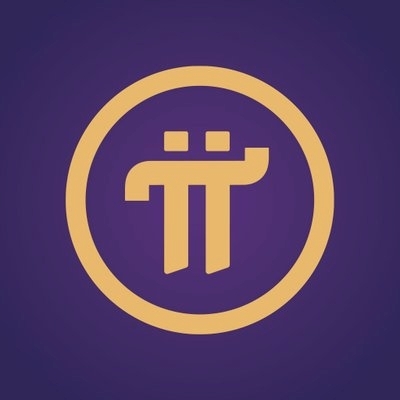What is DeFAI (Decentralized Finance Artificial Intelligence)?
Original Title: "What Is DeFAI (Decentralized Finance Artificial Intelligence)?"
Original Author: Sankrit K
Compiled by: Scof, ChainCatcher
Key Points:
Since the advent of artificial intelligence agents, "crypto" and "AI" have become buzzwords and headlines for everyone. Together with blockchain technology, they form an innovative triad that could shape the technological landscape of this decade.
Mark Zuckerberg predicts that there will be more AI agents than humans in the future. Blockchain is the ideal environment for these AI agents to thrive—permissionless, trustless, tamper-proof, and transparent.
DeFAI—the fusion of decentralized finance and artificial intelligence—is a new crypto narrative that uses AI to bridge the accessibility gap in decentralized finance (DeFi).
This article will explore the narrative of DeFAI in detail and outline some popular projects innovating in this niche.
DeFAI (Decentralized Finance + Artificial Intelligence) is a way to integrate artificial intelligence (AI) into decentralized finance (DeFi) systems, aiming to enhance efficiency, accessibility, and user experience.
DeFi is a paradigm that fundamentally rethinks how financial systems and investment tools operate. It is entirely trustless and free of intermediaries; this is nearly impossible to achieve in most traditional financial scenarios.
However, one drawback of DeFi is that its technical complexity is overwhelming for the average user, and the learning curve is steep.
For many, the empowerment promised by DeFi is often overshadowed by the challenges of managing risks, interpreting complex data, and staying ahead in a 24/7 market. Users often find themselves confused: how can they fully leverage the potential of DeFi without getting lost in its complexities?
On the other hand, artificial intelligence (AI) has already demonstrated significant potential in simplifying decision-making and optimizing processes across various industries.
Thus, the overarching goal of DeFAI is to apply AI-based solutions to DeFi projects, abstracting technical details to make on-chain interactions more user-friendly for non-technical users.
DeFAI can provide real-time insights, automate trading, personalize strategies, and facilitate efficient decision-making, all without requiring users to bear the burden of technical details.
A common feature of current DeFAI-based applications is that users can perform complex DeFi operations through simple, human-like commands without deep technical knowledge.
In the narrative of crypto and artificial intelligence, several categories have emerged. Due to their similarities, most people struggle to distinguish between them. The differences often lie in subtle nuances that only become apparent upon closer examination.
AI Meme coins typically rely on hype without substantial functionality; crypto AI agent projects usually target specific use cases; whereas DeFAI takes an approach that makes the on-chain financial ecosystem more accessible to the masses.
The table below can help you better understand these differences.
At first glance, DeFAI and intent-centric blockchains or projects may seem similar, as they both focus on improving user experience and system efficiency.
However, upon deeper analysis, DeFAI and intent-based architectures are fundamentally different. They differ in design philosophy, implementation methods, and the scope of problems they address.
On the surface, both DeFAI and intent-centric blockchains aim to simplify user experience and enhance the efficiency of the blockchain ecosystem. They both attempt to abstract the complexity of on-chain interactions, allowing users to focus on desired outcomes rather than intricate technical details.
But the similarities end there.
Currently, DeFAI primarily uses machine learning algorithms and large language models to simplify interactions between humans and blockchains. On the other hand, intent-centric blockchains focus on the concept of "intent," where users express their expected outcomes, and the system typically employs a "solver" to find the best path to achieve that goal.
You can think of the solver as a specialized module in an intent-centric blockchain that translates user intents into executable on-chain actions. For example, if a user wants to swap tokens or transfer assets across chains, the solver determines the optimal path based on factors like gas fees, slippage, and liquidity, and executes the corresponding transaction.
DeFAI, however, addresses the problem differently. It does not focus on the infrastructure needed to execute intents but rather leverages AI to help users make better decisions before execution. The AI models in DeFAI analyze on-chain data, predict market trends, and recommend actions based on user goals (e.g., selecting the best liquidity pool to provide liquidity or optimizing asset allocation for yield farming).
It is important to emphasize that when considering the recommendations of DeFAI agents, users still need to conduct their own research.
Let's take token swapping as an example to see how each approach handles it.
Intent: Cross-chain token swap
DeFAI would use AI algorithms to provide real-time suggestions for the user:
Step 1: The user inputs, "I want to swap 1 ETH for USDC."
Step 2: DeFAI analyzes on-chain data, including DEX prices, liquidity pools, gas fees, and bridging costs.
Step 3: It suggests the best route, such as swapping ETH for USDC on Uniswap via Ethereum and then bridging USDC to Polygon to reduce gas fees.
Step 4: The user executes the suggested transaction through a semi-manual method or via the connected wallet interface.
Here, DeFAI acts as a smart assistant, helping the user make informed decisions while leaving the final execution control to the user.
Intent-centric blockchain, the process is more automated:
Step 1: The user inputs, "Swap 1 ETH for USDC."
Step 2: The system captures the intent and passes it to the solver.
Step 3: The solver determines the best path, which may involve splitting the transaction across multiple DEXs, utilizing Rollup to reduce costs, or combining the swap and bridging into a single operation.
Step 4: The blockchain executes the transaction on behalf of the user, sending USDC to their wallet without further input.
Here, the user interacts only at the intent level.
AI excels at learning from input data (training sets) and generating tailored outputs. If this data includes your trading history, investment patterns, and risk tolerance, DeFAI applications can create highly personalized financial strategies.
For example, suppose an AI-driven DeFi application analyzes your on-chain activity and finds that you frequently interact with stablecoins. Based on this, it might recommend high-yield stablecoin staking platforms.
Projects like Mozaic Finance are already working in this direction, helping users dynamically allocate funds to maximize returns and manage risks.
Staking is a popular (and mostly safe) way to earn guaranteed returns by staking assets. However, these returns are only guaranteed if the validator you delegate to is honest and performs well. Choosing the wrong validator can lead to reduced rewards or, in some cases, penalties like "slashing."
Selecting one from numerous validators is a challenging task, and naturally, this is a problem that can be handed over to AI.
DeFAI applications like HeyElsa can analyze multiple validators upon request, assessing important metrics such as uptime and reputation. For example, if a user asks HeyElsa to stake their assets, the system intelligently compares validators and selects the one that best matches the user's preferences.
With thousands of tokens on each blockchain, tracking investments has become increasingly complex for retail crypto investors. Brief trends, meme tokens, and airdrops often lead to over-diversified portfolios, making asset management difficult.
DeFAI addresses this issue by introducing natural language portfolio management, allowing users to interact with their portfolios as easily as sending messages.
Imagine you simply indicate your needs to the application—like "Show me the best-performing tokens this month" or "How many assets in my wallet are worth less than $1"—and the application outputs easy-to-understand, accurate results.
Platforms like HeyElsa and Griffain have achieved this functionality by combining AI and blockchain. They can interpret user commands, analyze on-chain portfolios, and execute requests on DeFi protocols in a chat-like interface.
Similarly, SoDAS (Solana DeFi Agent Swarm) integrates messaging platforms like Telegram and Discord, enabling users to manage their portfolios through conversational interactions.
Trading cryptocurrencies requires a strong mindset. Even if your strategy is well thought out, emotions often take over when it comes time to act—this is a common issue for most investors.
Watching momentary price fluctuations can often lead to impulsive decisions. DeFAI applications can largely eliminate emotional biases by automating trading strategies around specific goals, or even completely remove them.
Platforms like Loomix on LogX are leading the way in this area. Users can define specific financial goals, such as "Sell 50% of my ETH if the price drops below $3500 to minimize losses, or sell at $4000 to lock in profits," and then Loomix's AI algorithms will automatically execute these strategies.
Another example is Aspis, which offers AI-driven liquidity pools customized according to specific financial goals. For instance, you can instruct the system to allocate funds for a 20% return while setting a 5% risk cap. The AI agents within Aspis dynamically adjust these strategies to adapt to market fluctuations and optimize performance in real-time.
Here is a list of 8 DeFAI projects (in no particular order), along with brief descriptions and some of their key features.
DeFi + AI redefines the relationship between autonomy and automation. Unlike intent-centric protocols that prioritize outcome-driven automation, DeFAI retains human decision-making power by acting as a smart advisor rather than an executor.
The most challenging implication of DeFAI lies in its potential to humanize blockchain.
DeFAI has the potential to catalyze a new era where blockchain transcends its traditional niches by embedding intelligence into its infrastructure. The ultimate test will be whether DeFAI can scale without sacrificing the core principles of decentralization, a challenge that requires resilience in terms of the transparency of AI training, accountability of recommendations, and resistance to algorithmic monoculture.
While DeFAI can provide users with a more efficient and convenient way to engage with decentralized finance, always ensure to conduct thorough research before investing any capital.
The Involution Behind KOL: Is the Kaito Yap Model Really Sustainable?
Author: Nianqing, ChainCatcher
Have you noticed that many KOLs have started to Yap while scrolling through X these days? What are they all Yapping about?
Yaps is a points system launched by Kaito, an AI-driven crypto data analysis and social incentive platform, where X users can earn Yap points by posting high-quality crypto content (tweets, interactions). Recently, Berachain airdropped to Yappers, and today Kaito announced that the first 1,000 ANIME (the anime token under Azuki) Yappers and Kaito Genesis NFT holders can claim ANIME tokens. Coupled with collaborations with multiple projects like Story Protocol, Movement Labs, and MegaETH, the expectation that "projects on Yap Kaito can receive airdrops" has once again heightened Kaito's popularity.
Similar to the previous trajectory of Web3 social flywheels, KOLs and influential figures with existing clout thrive in the Yaps points system. They tirelessly produce articles on X and form matrices with other ICT (Inner Crypto Twitter). The benefit is that discussions about crypto and outputs on popular projects have increased, but foreseeable downsides are gradually emerging, such as the proliferation of low-quality content, excessive interactions causing harassment for KOLs, and deeper issues like influence monopolization. Kaito has recently announced the upcoming launch of Shadow Ban to improve the current chaos through technical means. However, controversies and doubts continue.
In 2024, fundamental analysis faces a complete collapse in the crypto space, and the current market increasingly confirms the saying, "Attention in crypto is everything." If memes are a result of the attention economy, then Kaito is more like an upstream business of the attention economy, focusing on how to manage and allocate attention. But the essence of the attention economy is simply the next better thing. As a product of this era, can Kaito overcome short-term behaviors and become a sustainable, practically useful product?
This article will provide a detailed analysis of Kaito. Due to the existence of Yap, there are many (inflated) articles about Kaito on X, but I still recommend you read this article.
Kaito is an AI-driven crypto data analysis and social incentive platform. According to the RootData page, Kaito completed two rounds of financing in 2023, raising $5.3 million in seed funding and $5.5 million in Series A funding, with investors including Superscrypt, Spartan, Dragonfly, Sequoia China, and Jane Street.
Founder and CEO Yu Hu graduated from Cambridge University and previously worked at traditional financial companies like Citadel and Deutsche Bank. In a recent podcast, Yu Hu revealed that he grew up in China, studied in the UK, and later started businesses in the US and Singapore. Yu Hu is not a tech geek; he is very skilled in trading and believes that trading is the closest way to the market. He also mentioned in the podcast that Kaito will achieve profitability in June 2024 and has seen over a hundredfold growth in the past year.
Its core functions include:
1. Crypto Social Data Analysis: By scraping social data from public platforms like Twitter (X) (such as interactions, follower graphs, content dissemination), Kaito builds a KOL influence scoring model to provide quantitative marketing decision support for project parties. Currently, some features of Kaito are paid; its official website shows that the annual subscription price for Kaito Pro is $833/month, while the monthly price is $1,099/month. Why is the pricing so high? Simply put, the cost of using the commercial API of the X platform is very high, and regulatory restrictions on call volumes lead Kaito to limit user access through price increases, ultimately opting for a ToB model.
Related Reading: “ In-depth Analysis of Kaito: How Did the Yap Activity Ignite the Social Flywheel? ”
2. Yaps Points System: Users earn Yap points by posting high-quality crypto content (tweets, interactions), which may be redeemable for tokens or other incentives (such as airdrops, project collaboration rewards) in the future. Kaito emphasizes that to prevent manipulation and witch-hunting, earning Yap points is not easy and does not rely on quantity. The total amount of Yaps distributed daily is only 25,000, while the total user base has exceeded 250,000 (as of January data), making its scarcity evident. As user numbers rapidly increase, the difficulty of earning Yap points has multiplied, creating intense competition.
The algorithmic mechanism of Yaps ensures that KOLs and major influencers in the core influence circle will "grow stronger," while novice users find it challenging to earn Yap points. This is because the evaluation mechanism relies on reputation-weighted influence rather than raw impressions or engagement. Therefore, if the cumulative qualified social engagement of a tweet does not reach a specific threshold, points may not be awarded.
The core principles for Yap point distribution are:
Quality > Quantity: Garbage content (duplicate, no analysis) will be filtered out by the system, resulting in zero points.
Hotspot Orientation: Provide in-depth analysis around projects recommended on the Kaito panel (such as Berachain, Monad, Xion).
High-Quality Interaction: Interacting with major influencers about the content of the tweets (comments, likes) is more efficient than merely posting.
In summary, only content that is hot, high-quality, valuable, and can genuinely spark discussions in the crypto industry has the opportunity to earn points. Additionally, bringing in new users will also earn points, but the condition for earning points is that the new users must earn Yap points.
3. KOL Scoring and Leaderboard: Kaito dynamically ranks KOLs based on AI algorithms, forming a "Yapper Leaderboard," which serves as a reference standard for project parties to select collaboration partners.
One of Kaito's strengths is filtering out smart followers from potentially inflated follower lists on the X platform, reducing the interference of bot accounts. This feature has strong commercialization potential and largely addresses the pain points of KOL marketing, providing project parties with quantitative standards through its own AI scoring mechanism. The leaderboard based on Yap points connects high-scoring users with project needs, forming an "influence-as-a-service" model, where project parties can purchase the "influence" of top-ranked users, making it more transparent compared to traditional KOL payments.
In 2024, fundamental analysis faces a complete collapse in the crypto space, and the current market increasingly confirms the saying, "Attention in crypto is everything."
If memes are a result of the attention economy, then Kaito is more like an upstream business of the attention economy, focusing on how to manage and allocate attention.
We can specifically categorize participants in the attention economy into:
Attention creators
Attention consumers
Attention distributors
Strictly speaking, Kaito is not just a simple crypto data analysis platform; it plays the role of an attention distributor, aiming to create a better network for efficiently allocating information, attention, and capital. Kaito founder Yu Hu has also made two judgments: 1. In the age of the attention economy, personal brands will become increasingly important; 2. In the AI era, people will place more emphasis on connections between individuals.
Yap is the tokenization of this "attention," and the Yap to Earn model aligns with the strong demand for traffic and community participation in the crypto industry. This is also the biggest difference between Kaito and Friend.tech's "direct monetization of influence," as Kaito's definition of influence is more refined and sufficiently unitized. As mentioned earlier, the scarcity of Yap points set at the beginning directly determines the influence of content in this space.
Of course, Kaito's surge is also inseparable from the wealth effect. More critically, the events constituting Kaito's wealth effect are not one-time or short-term behaviors. As an influence-launching platform, Kaito's mechanism can significantly help early-stage, unlaunched projects expand consensus. Recently, Berachain airdropped to Kaito Yappers, and well-known projects like Story Protocol, Movement Labs, Eclipse, and MegaETH have launched on Kaito's platform, promising to incorporate Yap points into airdrop or incentive plans, thus attracting more users.
Moreover, the valuation of Yap points is also assigned a higher value due to their scarcity and difficulty of acquisition. Kaito does not solely use its own tokens to reward creators. By participating in its ecosystem, users can also farm multiple airdrop rewards from top projects.
The other side of the wealth effect is speculation. Kaito's Yap competition indeed provides creators and content producers with motivation to create, but it has also led to a proliferation of low-quality content. Many KOLs have complained that the Twitter feed has been polluted by Yap, even claiming, "If I see one, I block one." Although Kaito is about to launch Shadow Ban to limit low-quality content, I believe Kaito should focus more on community education, continuously emphasizing the rules of Yap.
Additionally, the algorithm behind Kaito Yap is somewhat of a black box; although there are scoring standards, they are very vague. Furthermore, the current algorithm is clearly biased towards KOLs, as the measurement mechanism for Smart Followers exists, monopolizing the majority of Yap points for the core influence circle, making it very difficult for novice users to earn points. @ Tang Hua Banzhu once commented that Kaito is not a credible Twitter X evaluation system; at best, it is just a platform for KOLs to exploit. The so-called filtering of quality content has essentially turned into "to earn points, you must continuously promote popular projects on Kaito." This has also led to an excessive concentration of chips in the hands of top Yappers.
Yu Hu mentioned in an interview that his goal is to financialize everything through Kaito, allowing market forces to decide, such as users voting on which projects to launch on the Launchpad. But are market forces always correct?
KOL @Xiao Xiong Bing Gan.eth has judged that Kaito's popularity will wane. He pointed out that the voting mechanism for Kaito projects has gradually evolved into a queue for launching, leading to a lack of "bribery" motivation in the absence of survival of the fittest, causing Yap players' attention towards Kaito Launchpad projects to decline. Coupled with the current algorithm being unfriendly to retail investors, Kaito's long-term development may lack momentum.
The attention economy itself is destined to be a short-term behavior. Historical precedents tell us that once the support of fundamentals is lost, the narrative of the crypto market completely devolves into "the next better thing." Kaito may become a sustainable business model, but its true significance to the crypto market is whether it aids in short-term speculation or promotes greater interaction and consensus in the crypto market. As the wealth effect diminishes and attention shifts, how should Kaito avoid following the old path of Friend.tech and other Web3 social platforms?
Kaito founder Yu Hu has a grand ideal; he hopes that Kaito's ultimate goal is for users to forget the existence of the Yaps system, making the output of opinions a habit. Perhaps this is where the value of a product lies.


 Precio más bajo
Precio más bajo Precio más alto
Precio más alto 












































Datos sociales de SmartCash
En las últimas 24 horas, la puntuación del sentimiento en redes sociales de SmartCash fue 3, y el sentimiento en redes sociales en cuanto a la tendencia del precio de SmartCash fue Alcista. La puntuación global de SmartCash en redes sociales fue de 0, que se sitúa en el puesto 461 entre todas las criptomonedas.
Según LunarCrush, en las últimas 24 horas, se mencionó a las criptomonedas en redes sociales un total de 1,058,120 veces, y se mencionó al token SmartCash con un ratio de frecuencia de 0%, lo que lo sitúa en el puesto entre todas las criptomonedas.
En las últimas 24 horas, hubo un total de 120 usuarios únicos debatiendo sobre SmartCash y un total de 37 menciones sobre SmartCash. Sin embargo, en comparación con el periodo de 24 horas anterior, el número de usuarios únicos Aumento del un 3%, y el número total de menciones Aumento del un 19%.
En Twitter, hubo un total de 0 tweets mencionando a SmartCash en las últimas 24 horas. Entre ellos, el 0% son optimistas respecto a SmartCash, el 0% son pesimistas respecto a SmartCash y el 100% son neutrales respecto a SmartCash.
En Reddit, hubo 1 publicaciones mencionando a SmartCash en las últimas 24 horas. En comparación con el periodo de 24 horas anterior, el número de menciones Disminución del un 0%.
Panorama social completo
3